I have to say again, giant wombats!!!???
Need giant wombats!!
Need giant wombats!!

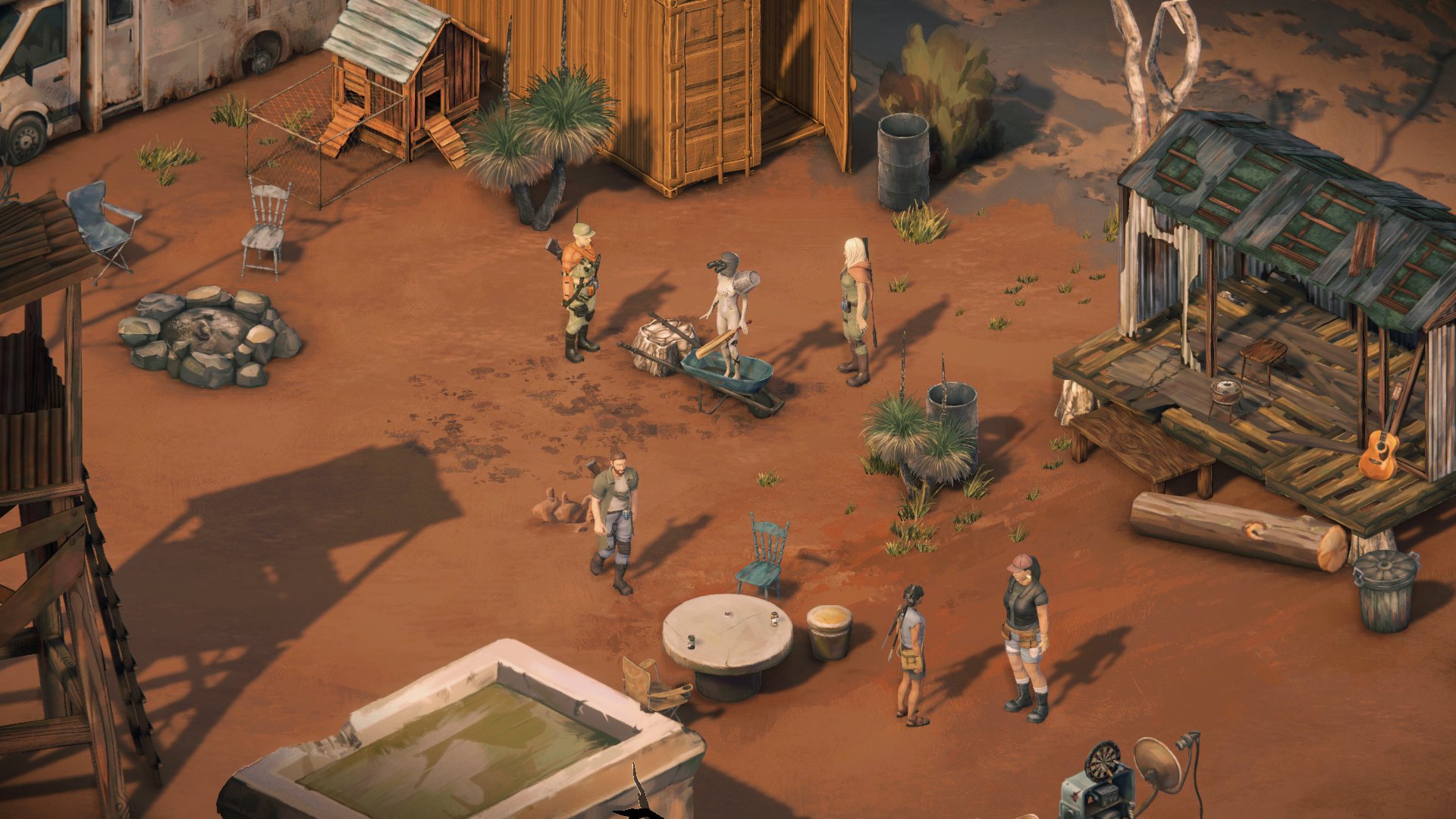















Sara Laubscher, 2D & 3D Artist on Broken Roads, recorded this video of her texturing one of the children in the game. Enjoy this 15x-speed timelapse of her work.
Music is 'Taylor's Charm' by Drop Bear Bytes' Audio Lead and Composer, Tim Sunderland, from the Broken Roads soundtrack.
Nah, what would be more funny is if the game doesn't include any super-versions of murderous Australian wildlife...just REGULAR Australian wildlife, which is already enough, and the mutated versions are actually less harmful.I have to say again, giant wombats!!!???















James Giles, Gameplay animator on Broken Roads, recorded this video of himself rigging and skinning a character in the game. Enjoy this 15x-speed timelapse of his work.
Music is 'Ambient One' by Drop Bear Bytes' Audio Lead and Composer, Tim Sunderland, from the Broken Roads soundtrack.















JANUARY 2022 UPDATE

HELLO AND WELCOME TO 2022, EVERYONE!
The team at Drop Bear Bytes are slowly crawling out of their holiday haze and gearing up for a massive year rounding out the content in Broken Roads.
We’ve got some great announcements coming in the next few months (possibly next few weeks, but let’s see!) and one of the first we’re happy to say is that we’re going to commit to fortnightly updates on YouTube, which will all be posted to Steam as well.
STEAM COMMUNITY GROWTH
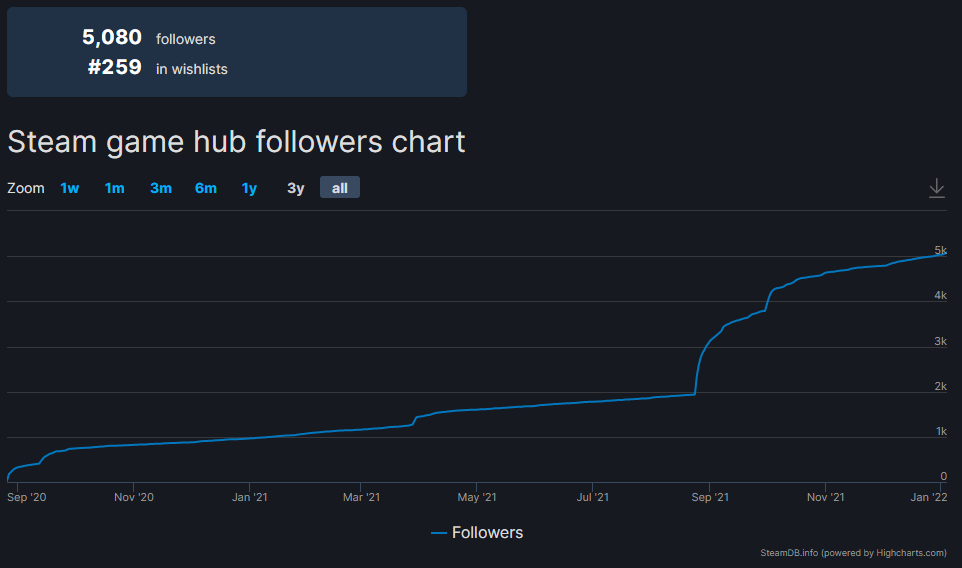
Steam has grown into our largest following (as you can see in the image above, we’re at over 5,000 people, a stat which can be tracked on SteamDB) and we’re really stoked to be ranked at #259 out of all wishlisted games. To put it in perspective, there were over 10,000 games launched on Steam in 2020 and there are well over 50,000 games listed on the platform in total.
So that means Broken Roads is ranked in the top 0.5% of all the titles on Steam. (It’s never enough, though, so tell everyone to wishlist our game!)
UPCOMING VIDEOS
We’re really ramping up the video content this year, and planning to release the likes of more time lapses from the artists, interviews with various members of the team, dev commentary playthroughs with specific Q&A of characters and locations, and much more. We’re going to show off each origin story in more detail, take a deep dive into the development of different audio tracks, and of course a couple secrets we have up our sleeves. Much more to come.
2021 HIGHLIGHTS AND WRAP-UP
- Our Discord community grew to over 400 members. Come say hi!
- During Melbourne International Games Week (MIGW) in October, we posted our first ever AMA (hosted by Tim Sunderland, Kerstin Evans and Craig Ritchie):
- Tim and Craig then recorded some early game live play with commentary, also for MIGW:
- Next up, our art team hosted their own live stream for the MIGW Steam Festival:
- Sara Laubscher, a 2D & 3D Artist working on Broken Roads, recorded this video of herself texturing one of the children in the game. Enjoy this 15x-speed timelapse of her work:
- Another time-lapse, this time from James Giles, our Gameplay animator on Broken Roads. He recorded this video of himself rigging and skinning a character in the game:
- In case you missed it, in late November we posted a dev commentary video with Colin McComb, Tim Sunderland and Craig Ritchie running through some Aldersyde & Surveyor origin story content:
- Our August trailer has been viewed over 100,000 times across YouTube and social platforms. If you’ve not yet watched it, a) shame on you, and b) here it is:
And that’s what we’ve been up to for the last few months. We’re really looking forward to bringing you much more content this year, and as always showing off what the Drop Bear team are working on!
- Craig Ritchie, Founder & Game Director















Next up in our series of timelapses from the Broken Roads art team is 3D Modeler Bianca Roux's sculpt of Jasmine, one of the less scrupulous characters you'll encounter in your travels...
Music is 'Cameltrot' by Drop Bear Bytes' Audio Lead and Composer, Tim Sunderland, from the Broken Roads soundtrack.















James Giles, our Gameplay animator on Broken Roads, is back with another rigging and skinning timelapse (this time at 4x speed) for Jasmine, a character you'll meet in your travels through Western Australia!
Music is 'Rock Paper Lizards' by Drop Bear Bytes' Audio Lead and Composer, Tim Sunderland, from the Broken Roads soundtrack.















A CLOSER LOOK AT THE SOUNDTRACK OF BROKEN ROADS
Join us as we take a deep dive into creating 'Cameltrot' from the Broken Roads soundtrack with Drop Bear Bytes' composer and Sound Designer, Tim Sunderland.
Tim walks us through the ins and outs of creating game music in Ableton.
Enjoy!
- The Team at Drop Bear Bytes
Our VFX Artist, Ryan Gee
@CephalopodSalad
, shared this quick video of some of the recent improvements on the generation and textures for the vine tool used in
@BrokenRoadsGame
.
The fantastic art team at Drop Bear Bytes have been hard at work on further visual targets for Broken Roads. Enjoy a preview of things to come!


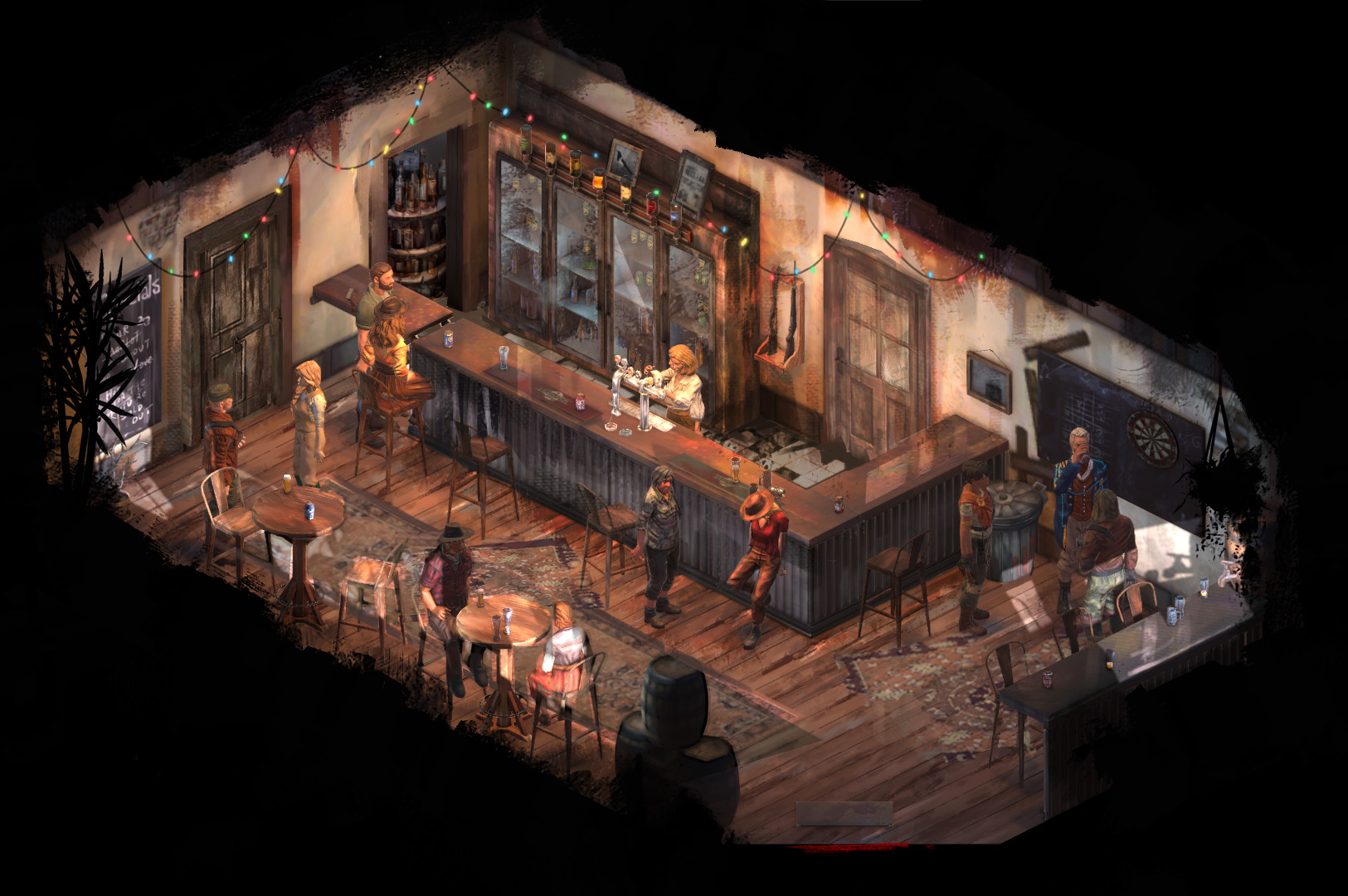
























Pre apoc civilization needs to have been developed sufficiently for that to happen.It doesn't look that post-apocalyptic to me. I want war-torn and ruined environments in my PA.















DROP BEAR BYTES IS HIRING A MID-SENIOR UNITY GAME DEVELOPER

Drop Bear Bytes is looking for a Unity Developer with 4+ years experience, ideally who has shipped 1 or more commercial video game titles, but we are happy to look at candidates from related fields who would be a good team fit!
We are looking for someone to join the growing team working on Broken Roads, a narrative-driven post-apocalyptic CRPG set in Australia. We are a 100% remote work studio with team members in Australia, North America, Europe, and Africa, and the successful candidate will work with multiple other developers, level designers and narrative designers on a wide range of tasks including new gameplay mechanics, system improvements, and editor tools.
They will be expected to engage with a wide range of personalities, from the CFO down to work experience students who may be joining the project for a week or two.
The role is full-time, permanent and fully remote, but the applicant must be based in Australia. Competitive salary + super.
Role and responsibilities:
Experience needed:
- Help the team with feature development, bug fixing, source control, and all things Unity/C#
- Identify editor tools or plugins which can improve workflow
- Use your technical expertise to support the team in Australia, South Africa and Europe
- Picking up and becoming familiar with an existing codebase and existing workflows
- Engaging with external developers and QA teams, but being our ‘in-house expert’
- Clear, efficient communications to both internal and external stakeholders
- Essential to be mindful and respectful of all team members
- Able to code to and advise on industry-standard best practises
- Excellent time management is essential as the role is fully remote
———————————
- Deep understanding of and experience in Unity (2020.3.x)
- Expert C# knowledge
- Strong Git and source control knowledge
- Excellent debugging skills
- Shipped at least 1 commercial title on PC and/or console
- Experience with packages: Input System, Addressables, TextMeshPro
- Familiarity with the Universal Render Pipeline a plus
- Knowledge of SOLID and KISS principles
- Agile project management familiarity (JIRA & Confluence in particular)
- Proven ability to work as part of a distributed team
If you don’t meet all the requirements above, please apply anyway if you think you are a good fit and you are excited about the project! Please send a CV and cover letter to team@dropbearbytes.com, including salary expectations and availability. We’re hoping to hire for this role by mid-May 2022, but longer notice periods will be considered for the right candidate.
Drop Bear Bytes is an Equal Opportunity employer committed to diversity in the workplace. All qualified applicants will receive equal consideration for employment without regard to race, colour, religion, sex, sexual orientation, age, national origin, disability, protected veteran status, gender identity or any other factor protected by applicable federal, state or local laws.
Drop Bear Bytes is also committed to working with and providing reasonable accommodations to individuals with disabilities. Please let us know if you need an accommodation at any point during the interview process.















Drop Bear Bytes' Leanne Taylor-Giles, Narrative Director, and Colin McComb, Creative Lead, answer questions about their work on Broken Roads.
Topics include: writing for Planescape and Dungeons & Dragons, good writing in videogames, details of Broken Roads' apocalypse, Half Life's immersive narrative, Transistor's combination of mechanics and narrative, remote work across multiple time zones, assuming good intentions in online communications, Leanne having to 'Aussie-fy' non-Australians' writing, gecko egg sushi, dealing with writer's block, what happens at 3pm on October 4th 2036, and much more.
TIMESTAMPS:
00:00 Broken Roads' Narrative Director and Creative Lead talk story
01:12 How did you become a writer and what are some of your influences?
02:51 What are some of the best written games?
05:37 The writing team are in various time zones. How have you made this work?
08:34 Colin, how have you researched Australia, and what is something you've learned that you find fascinating?
09:51 Leanne, what did you miss about Australia while living in Canada?
10:53 Can you give any details on the apocalypse in Broken Roads?
12:05 You both worked on Torment Tides of Numenera. What's it like to be working together again on another traditional-style CRPG?
15:35 What have been some of your influences for Broken Roads?
18:30 What are some of the challenges in writing about a post-apocalyptic world - a genre that's been explored so much already?
21:48 How do you deal with writer's block?
25:46 What's a highlight of your career, or a personal achievement that you're proud of?
27:47 What advice do you have for aspiring writers?
Huge thanks to Tim Sunderland, Drop Bear Bytes' Sound Designer & Composer, for recording and editing this interview!















SCULPTING THE CHARACTERS IN BROKEN ROADS
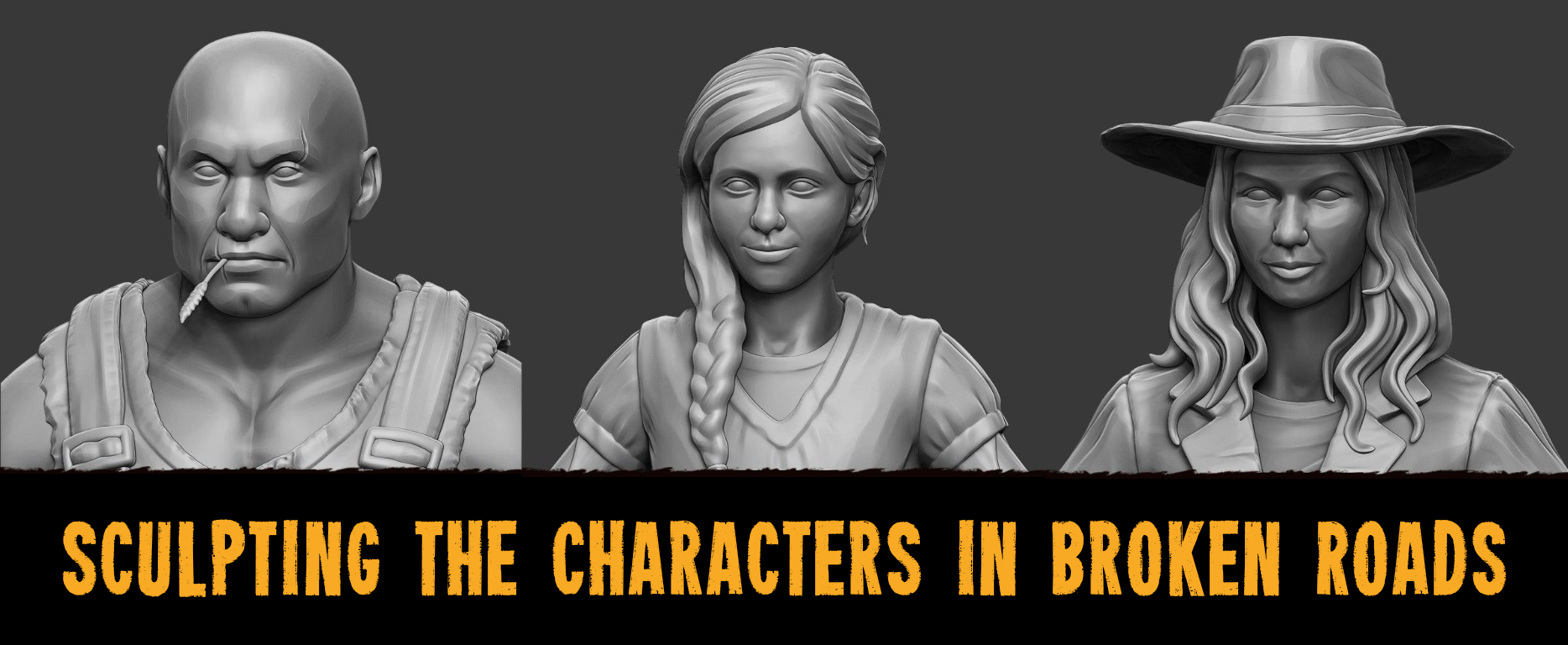
Bianca Roux is Drop Bear Bytes’ Lead Character Artist, a role that covers 3D modeling all the people, creatures and a good few buildings and props in the world of Broken Roads. This week, our Narrative Director, Leanne Taylor-Giles, spoke to Bianca about her work, her inspirations, the differences between working on films and games, and her penchant for True Crime Podcasts. Enjoy!
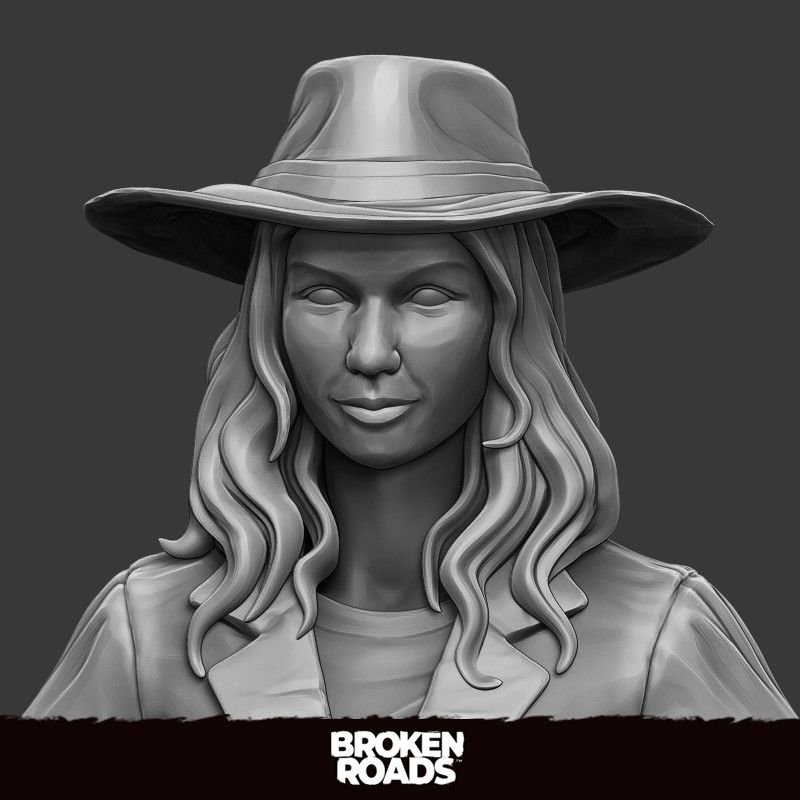
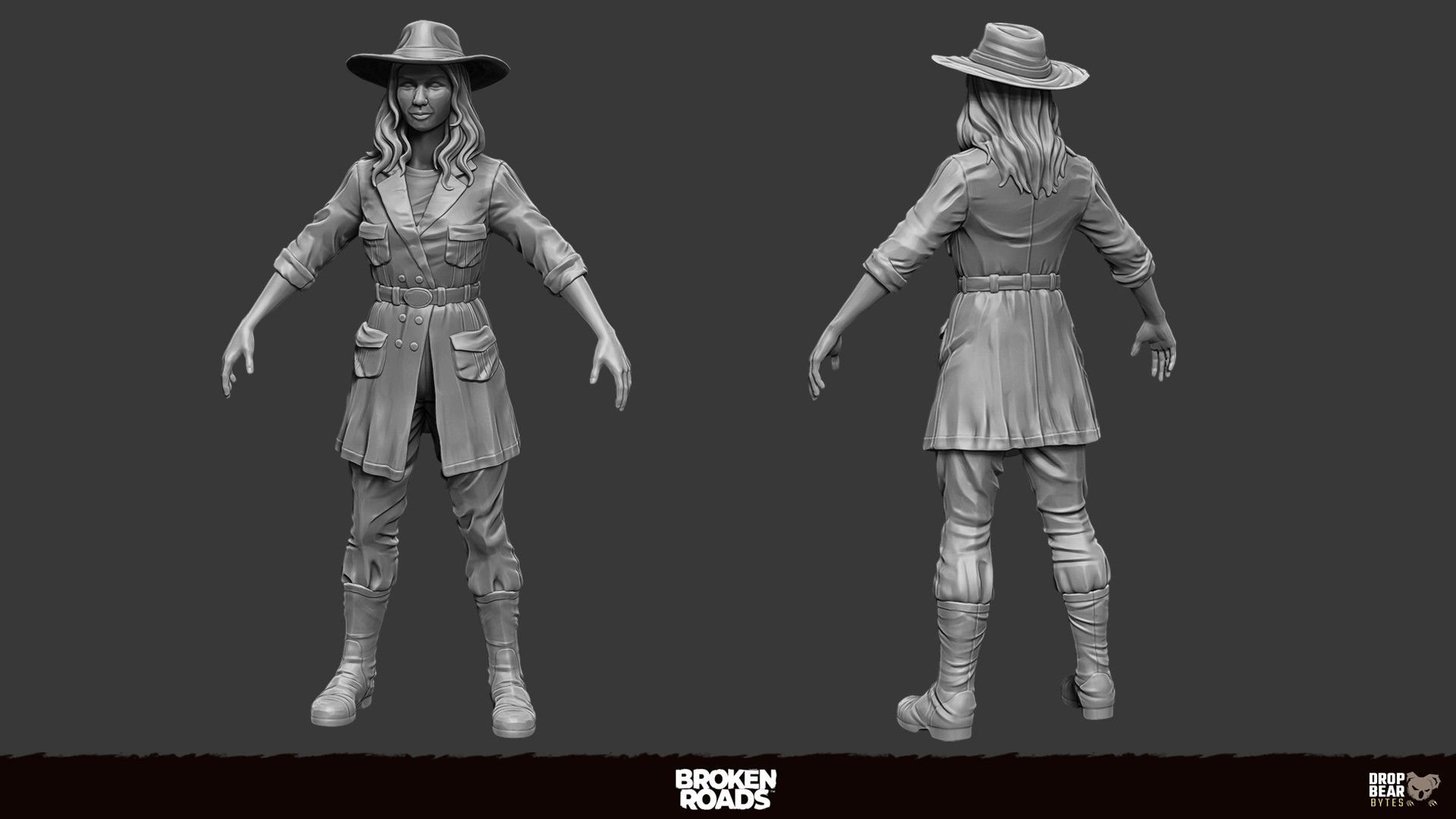
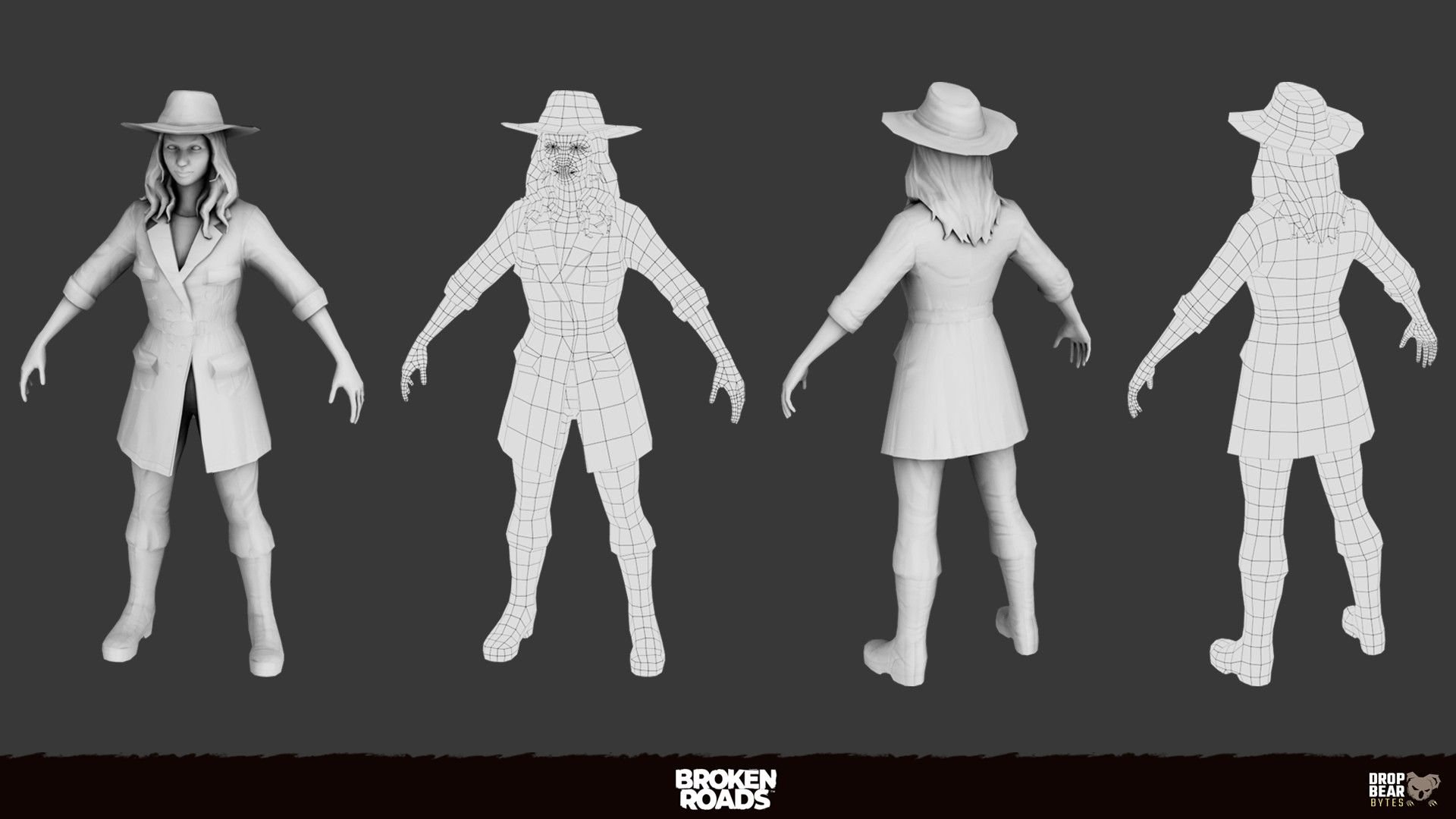
How do you decide on what face to give a character? Sometimes the concept will just have a blank oval - what kind of references do you use, and how to do you find them?
Narrative will usually have an idea of who the character is based on, whether that be a celebrity or photo references on the internet. I’ll usually head over to pinterest and grab a few photos that interest me which would suit that particular character description. For Reverend Nate Blacke for example, I instantly thought of kind eyes, it was important for me to portray that. For Scary, I would look for references of body builders and people who look tough, his scars in particular would portray that he has been in fights. Each character tells a story with their facial expression, wrinkles, smile or frown, and it really helps to find reference images to base a face on.
What are some of the little details you're most proud of, on these or other characters?
Definitely the cloth work. I have really loved exploring the style for this game. There is a detailed, yet stylistic hard-edged approach which was a challenge to master when I started at Drop Bear Bytes, however practice has achieved some great rewards and I really love how the cloth work brings out details from an isometric perspective.
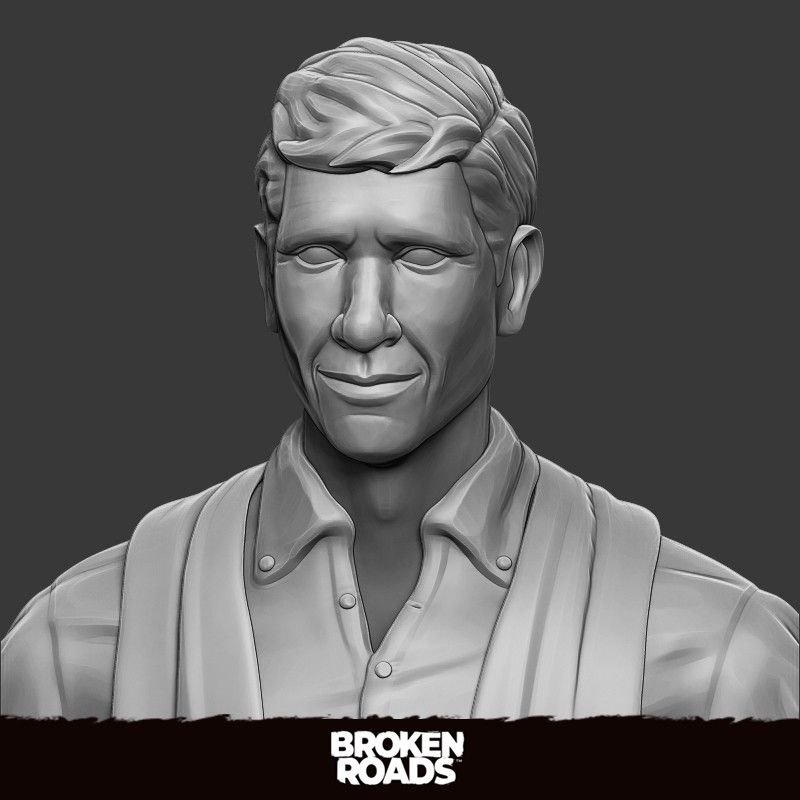
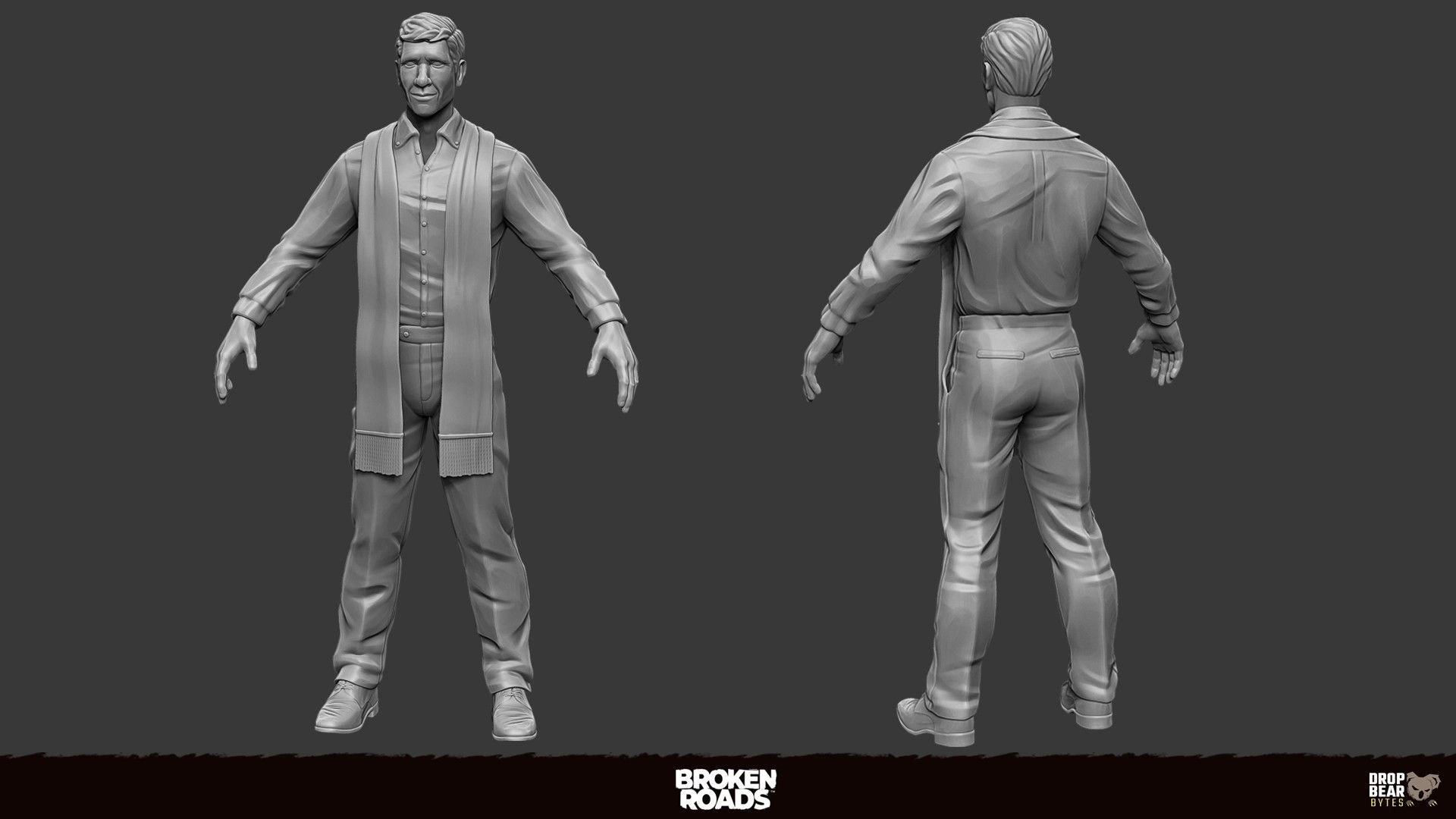
Reverend Blacke body sculpt
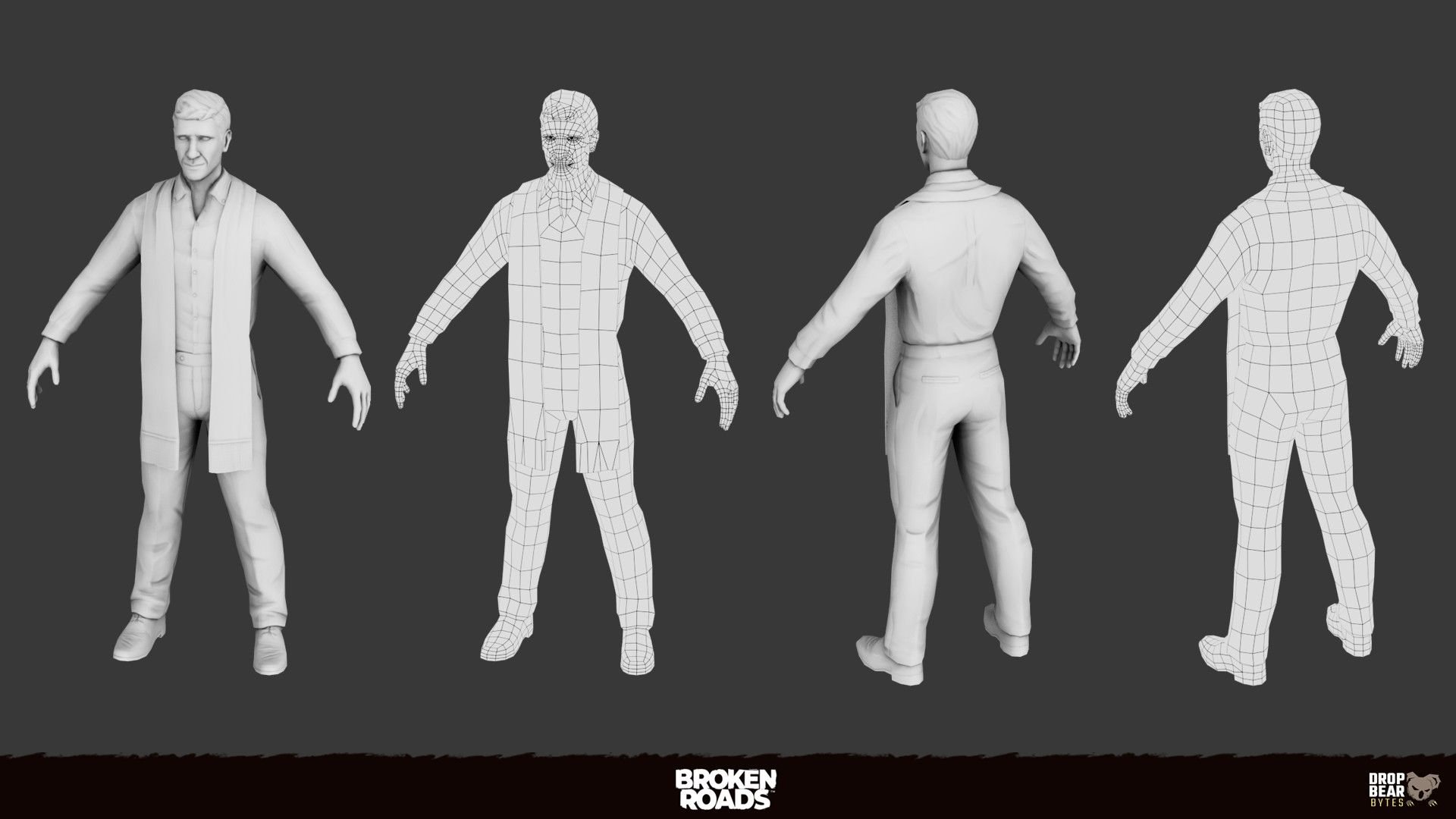
What’s your favourite part of modelling a character? Getting started, adding fine details, somewhere in between?
The best part is adding detail and seeing the character come to life. In the initial stage of sculpting there is a lot of figuring out and proportion checking, adding detail is when we get to the fun stuff. It makes me really excited!
Is there a particular tool or process you find yourself using more often than others? If so, what is it, and what makes it the mainstay of your workflow?
The Orb-brushes by Michael Vicente is what I swear by. These brushes lend well particularly to this project because of the hard-edged style. I highly recommend purchasing these brushes if you’re wanting to achieve a look and feel similar to the characters in Broken Roads.
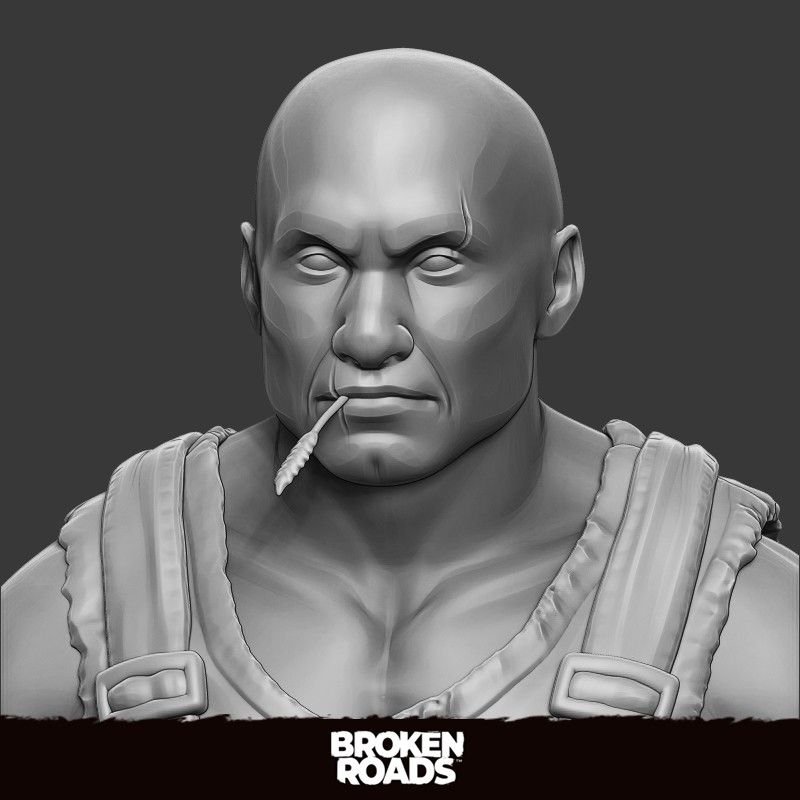
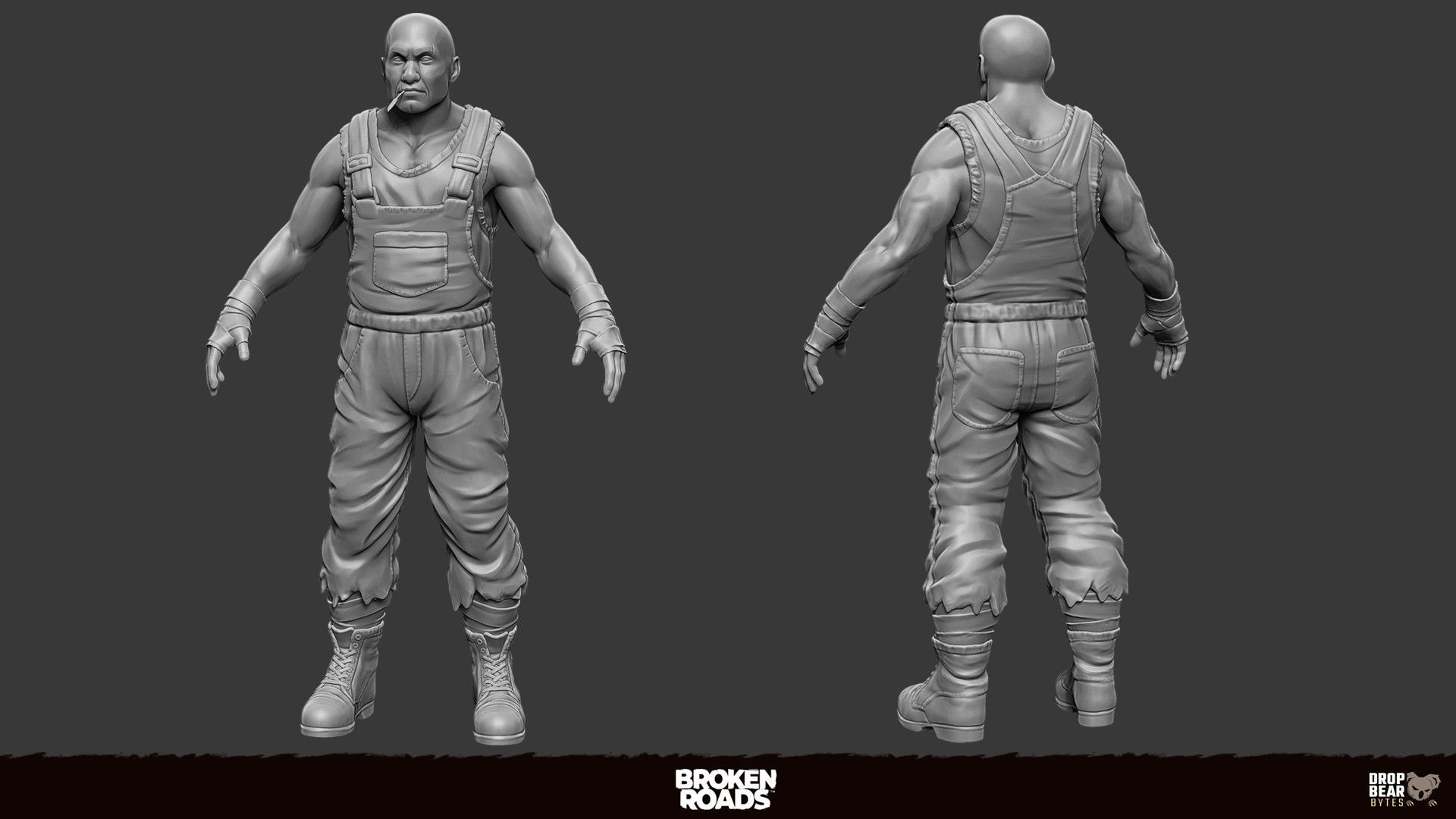
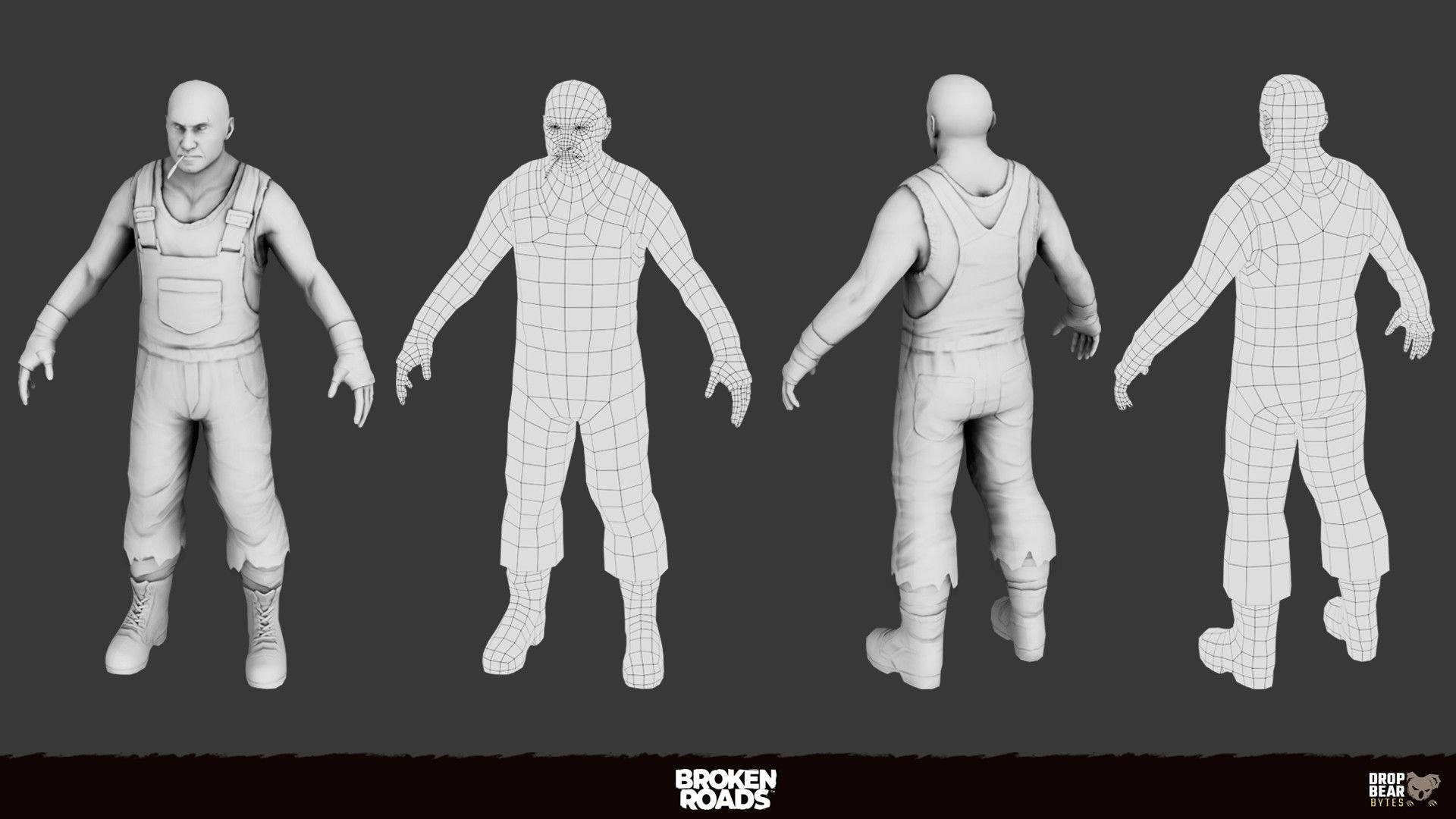
Do you listen to anything in particular while sculpting? If so, do you find that it changes by character, or by in-game location, or more by mood?
I have to embarrassingly admit that I listen to a lot of True Crime. My personal favourite is Dateline :D
It might be quite fitting for the mood considering that this is a post-apocolyptic game haha.
How do you get into a ‘flow state’? Writers often talk about getting over or past writer’s block, but other disciplines have the same struggles. What are some of your tricks for getting yourself motivated on low-energy days?
Funny enough this does relate to the previous question. Most people would think that music might inspire them artistically, for me it’s getting into a serious mindset and listening to podcasts. If I were to listen to music I might get distracted and start dancingCoffee is also a favourite go-to.
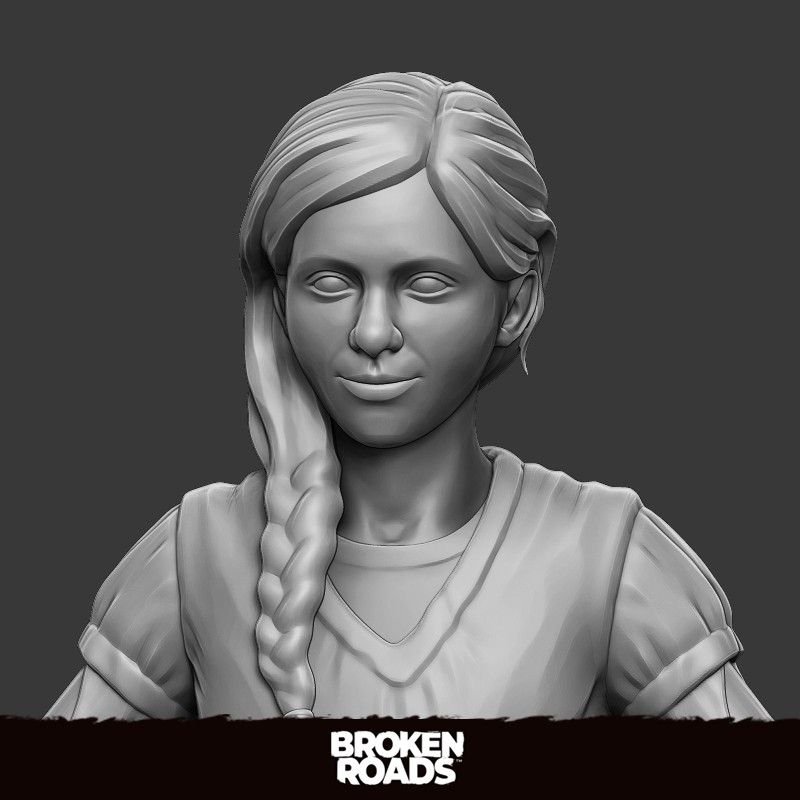
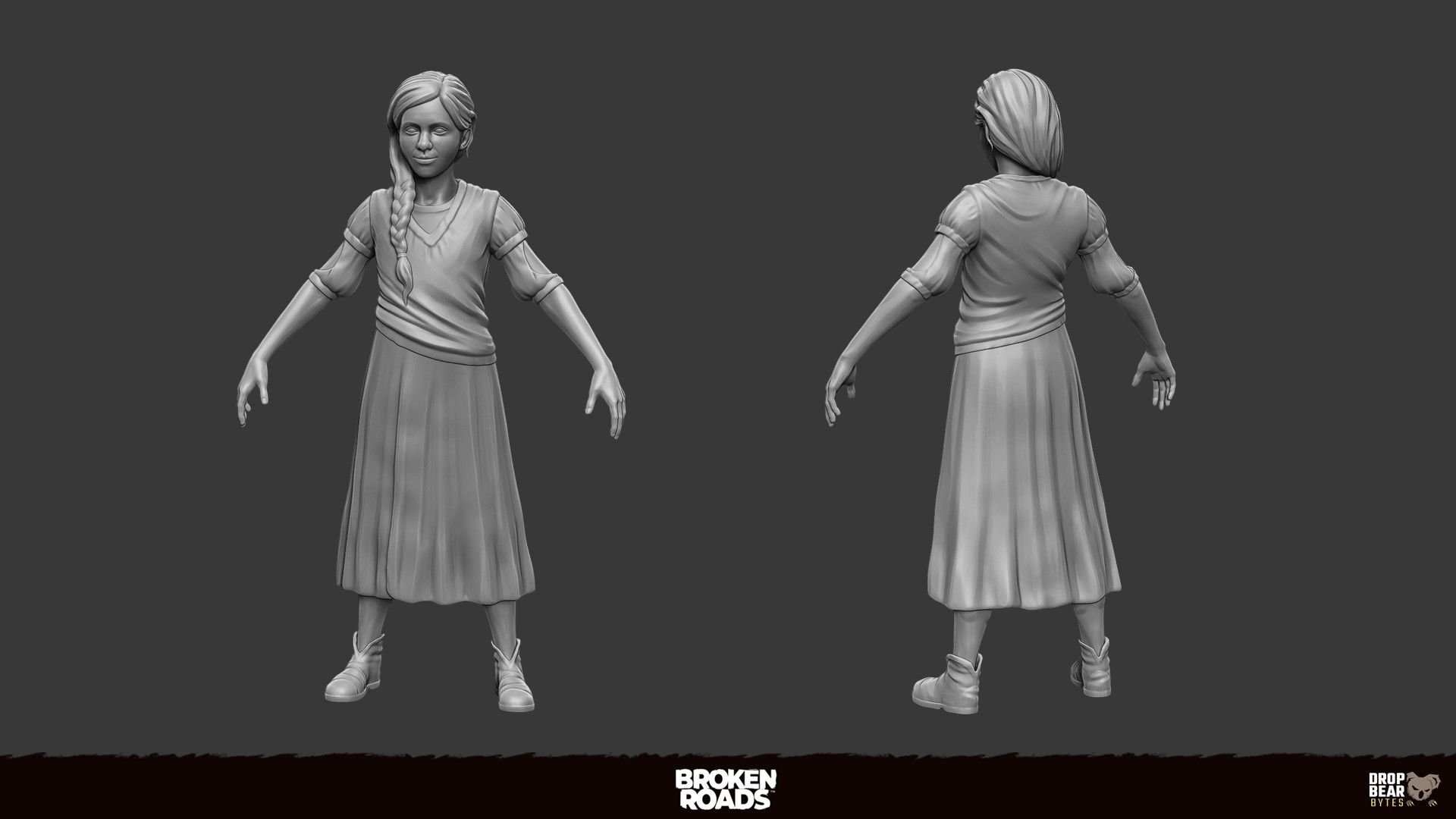
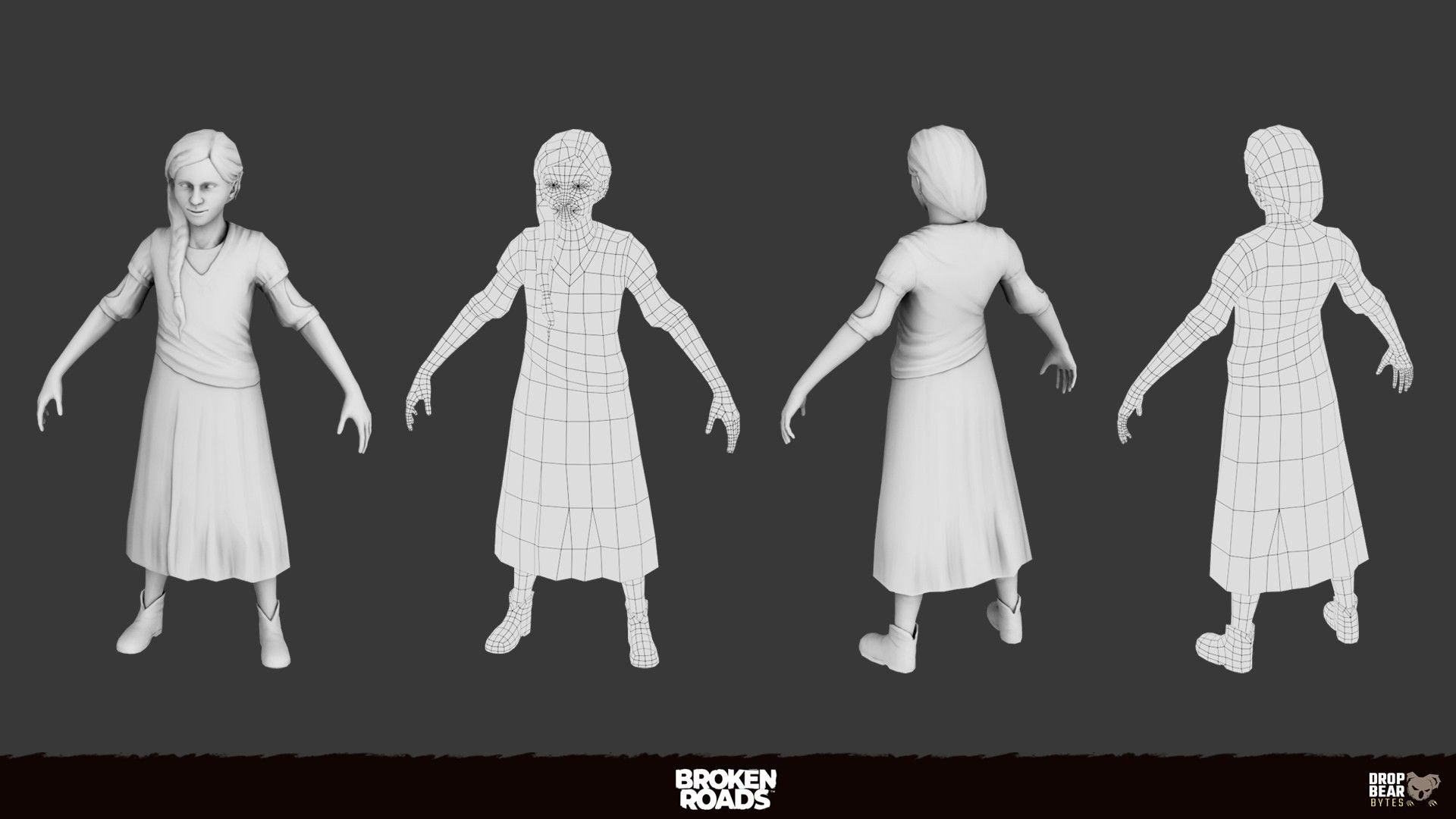
Your models are beautifully detailled. How do you retain that detail when you retopologise to a lower-poly version?
I use Normal, Ambient Occlusion and Curvature Maps on the models. The High-Resolution detail is baked onto a low topology version and from that, these maps are extracted.
How different is it working on a game to working on a film? Are models for film optimised in the same way? How do you feel about the optimisation/de-rezzing process in general?
Models for film and games are optimised very differently. With film there is the luxury of pre-rendering the frames, whereas in gaming it is mostly real-time rendering. The Models have to be optimised so that it doesn’t put too much strain on a players computer or console. Therefore the Models have to have far less polygons than a Model for film.
Regarding the question about my feelings about optimisation in general, for each project I adapt and tune into the project’s needs, so I have no qualms either way.
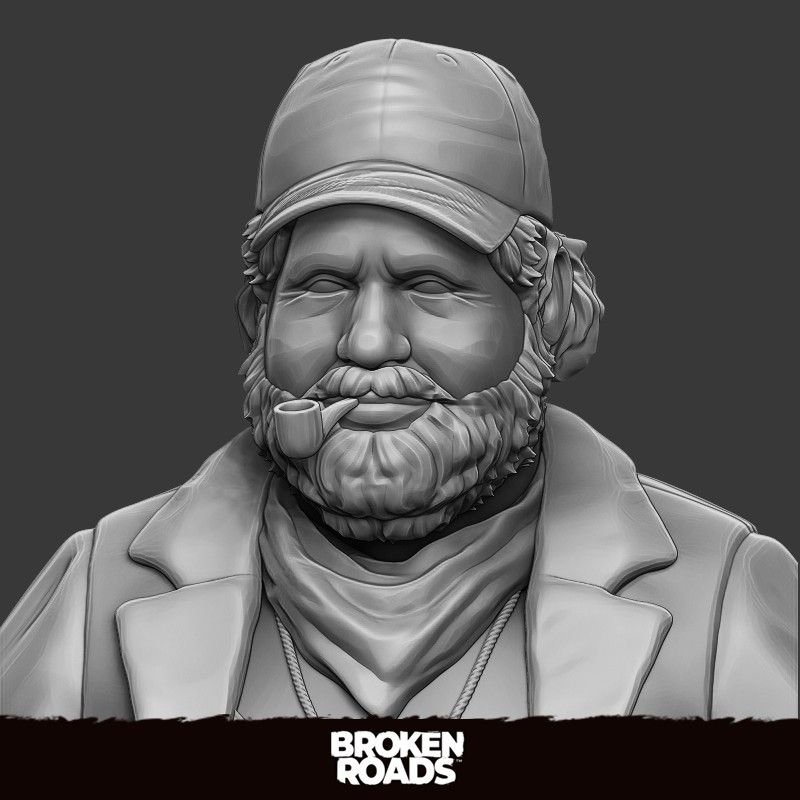
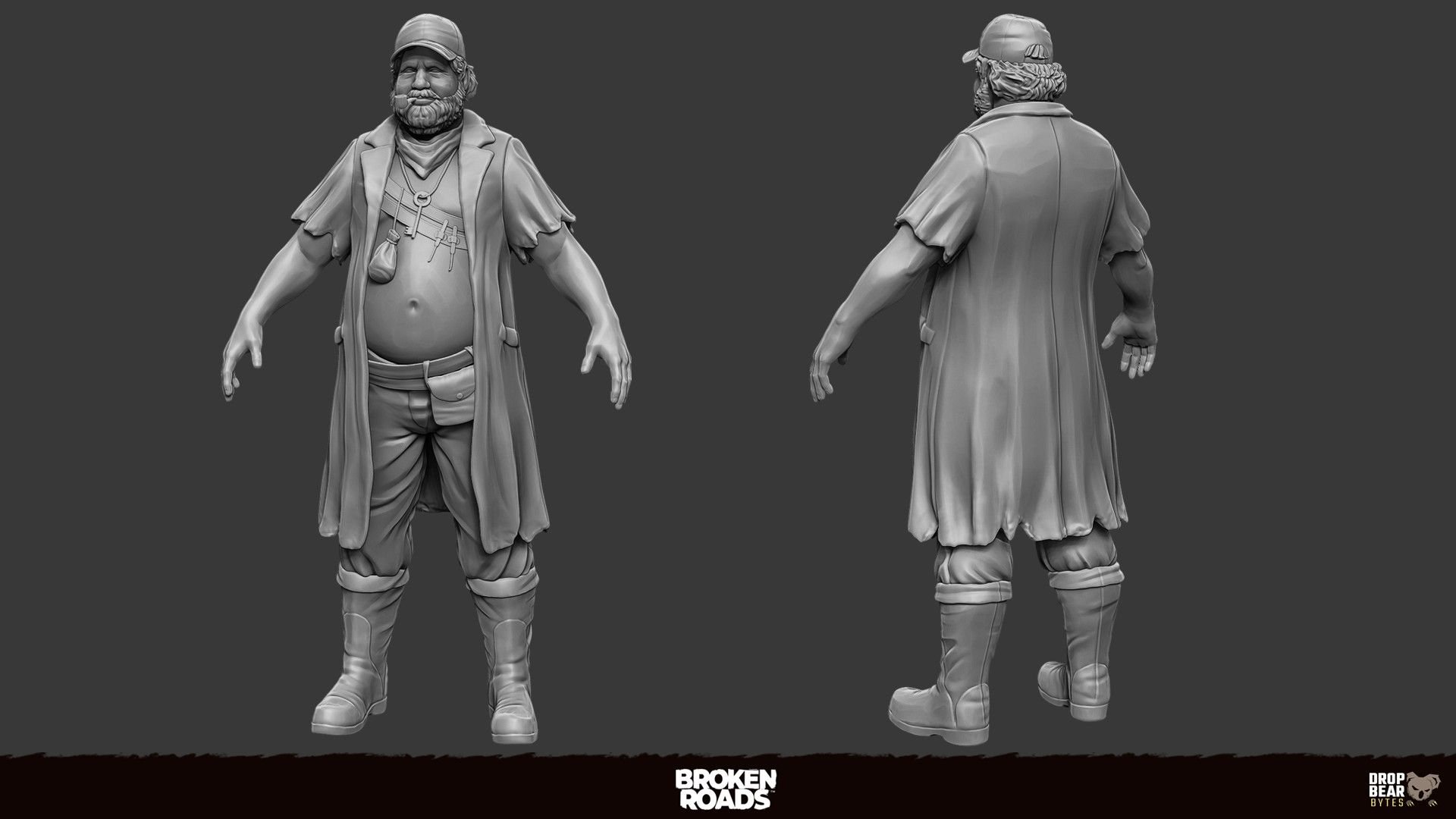
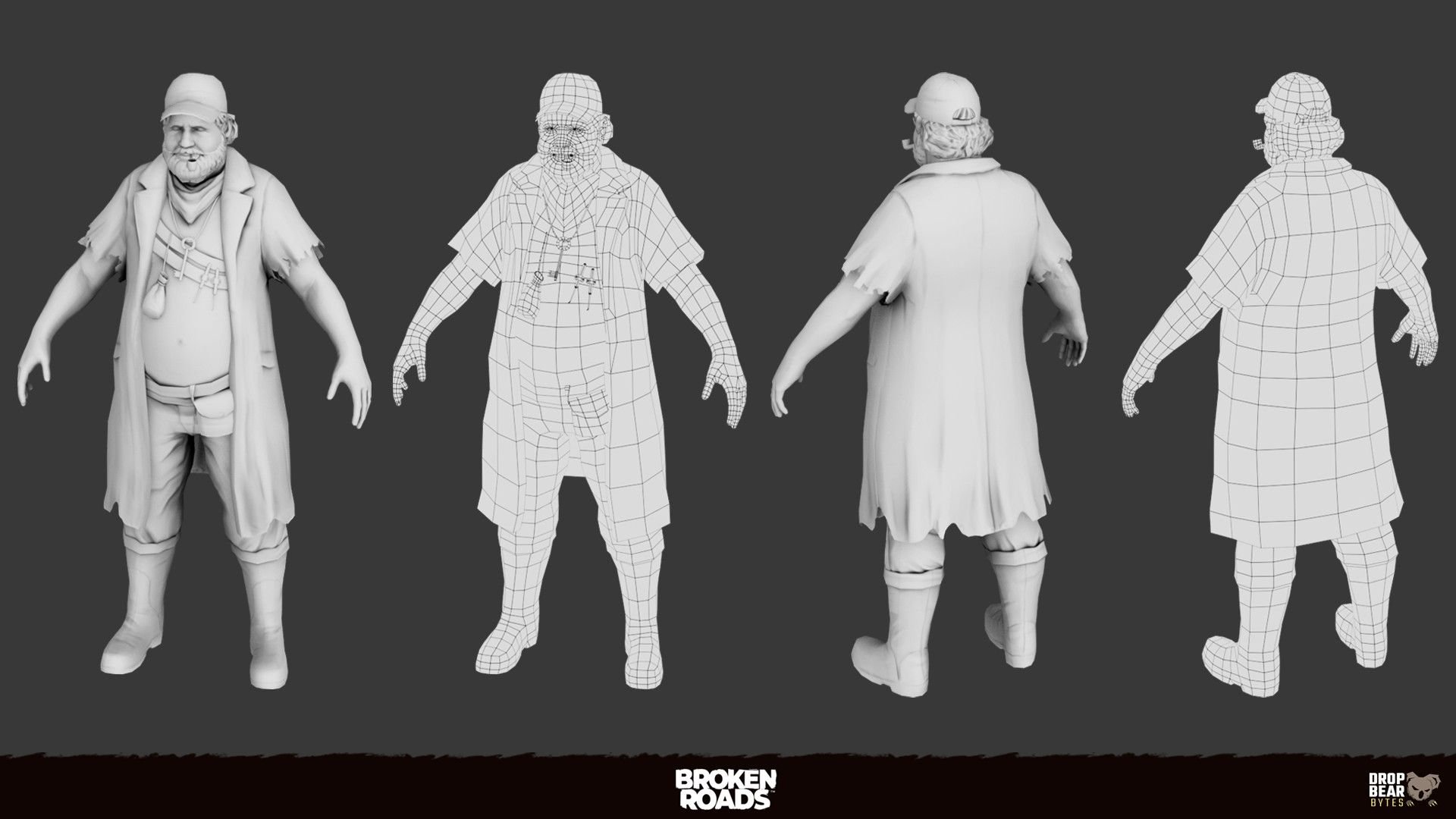
If you could share one piece of advice with up-and-coming character or creature modellers, what would it be?
Practice and Resilience. It is a tough industry to break into, especially when you are starting out. You will be comparing yourself to industry experts, which you shouldn’t do. Rather strive to be as skilled as them one day and practice every day at bettering your craft. Keep your mind thirsty and constantly be seeking out tutorials, feed back and advice from more experienced artists.
Follow Bianca on Twitter at https://twitter.com/BiancaRoux4, and visit her Artstation here: https://www.artstation.com/missbee















LEVEL DESIGN WITH AN ART PERSPECTIVE

Today’s devblog is with Luke Dorman, our intrepid Level Designer and Unity integration expert. Luke’s going to walk us through Ardath, a location in Broken Roads that holds a special place in our hearts. Our very own hive of scum and villainy, Ardath is where you’ll find the very best of black market goods and the (almost) worst that humanity has to offer. Collectively, the people living here can be a bit disorganised, but they know how to throw a punch, how to take one, and best of all, they brew their own beer. Cheers, Luke!
Hello, all! I’m Luke, the Level Designer of Broken Roads, and today I’ll be going over some of the things I use from an art perspective when creating and assembling levels for Broken Roads!
We’ll be looking at some of the props and objects around the Ardath Hotel. Ardath is a small settlement filled with thugs, thieves, artists, and those who were rejected from other societies. These people are bandits, pillagers, and raiders, but they feel truly free here in Ardath.
The Ardath Hotel is of course based on the real-world equivalent in the actual location of Ardath in Western Australia. The 3D model of the building was done by Bianca Roux, and the texturing was done by Sara Laubscher, both brought the building to life while giving it that Aussie post-apoc flair!

Photo from http://www.agathabertram.com/snapshot-the-ardath-pub/
TANGENTS
Firstly, I’ll go over something small I keep a keen eye out for when placing objects in a scene. When two separate lines interact with each other in a way that creates an unintended relationship between them, a tangent is formed. Tangents can sometimes be hard to notice at first but most will stick out like a sore thumb if they’re not kept in check. Let’s look at some examples:
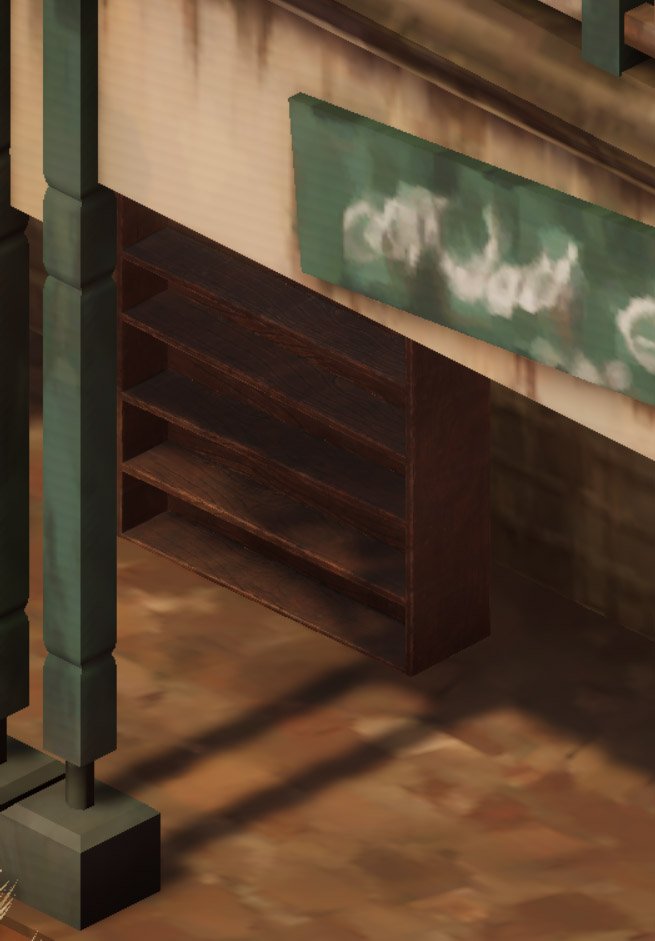
You can see here that the edge of this bookshelf is aligned with the pillar of the building. The top shelf also lines up with the top of the verandah. This makes it look a bit awkward and like it’s almost part of the hotel, so let's rotate it and change its position.
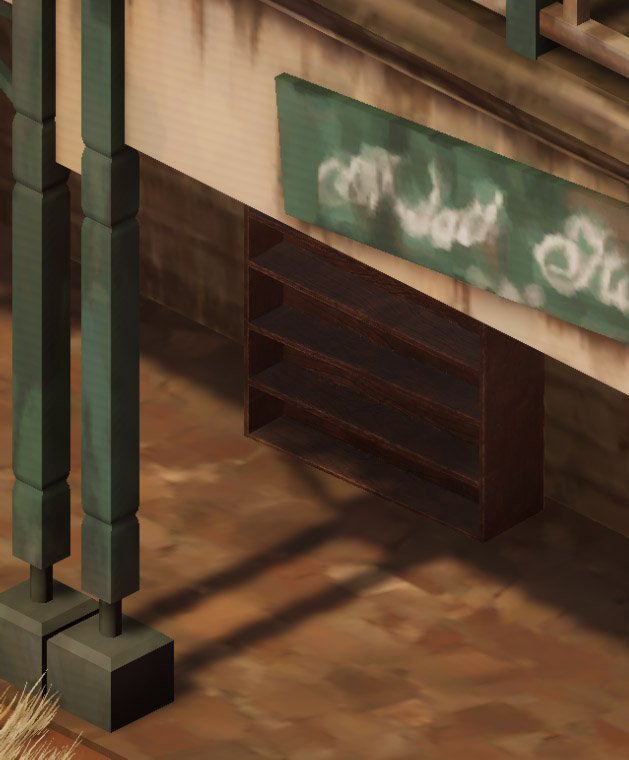
We’ve now rotated it slightly to not align with the top of the verandah, and we’ve moved it away from the pillars. We’ve also made sure the edge of the shelf doesn’t line up with the sign on the front of the verandah. Better!
But that was a more obvious example - what about smaller tangents, like this one?
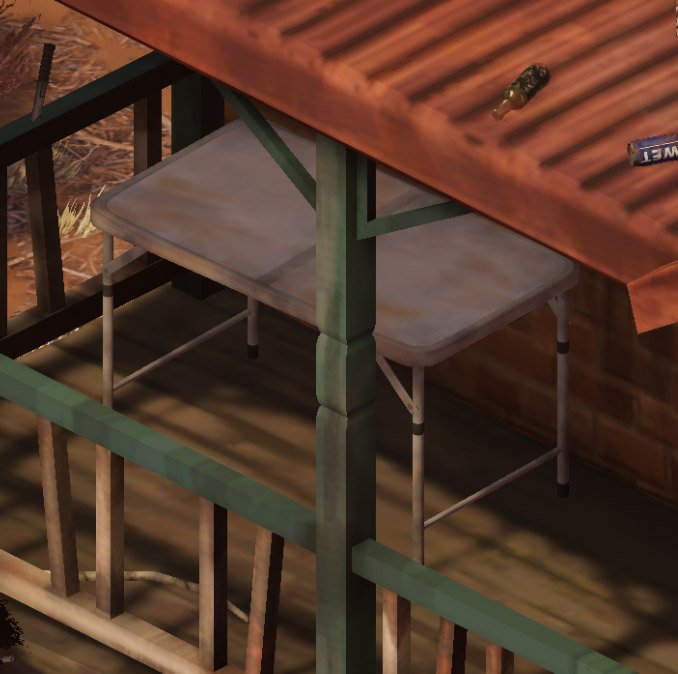
The top right corner of this table is barely aligning with the roof of the building, so we’ll make sure to move it away from the edge of the roof and rotate the table.
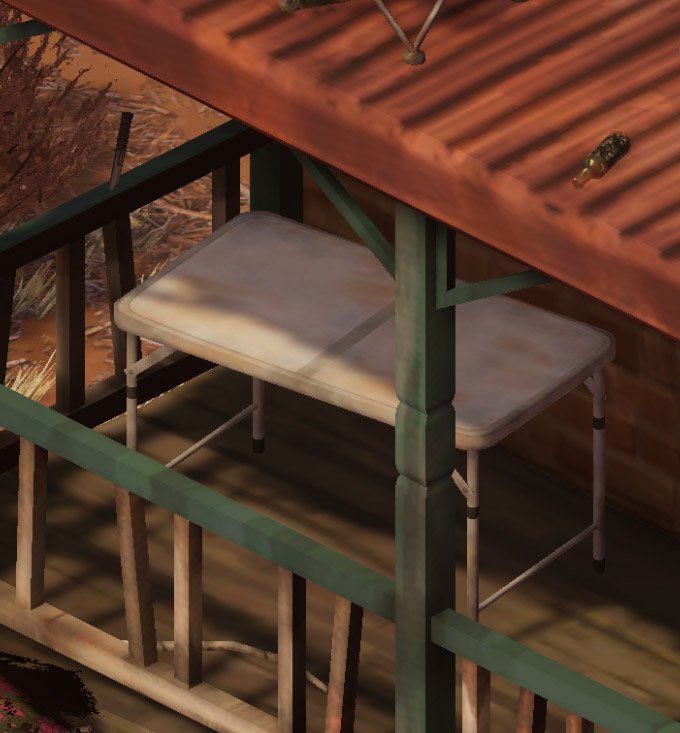
Now we’ve moved it to avoid the corner lining up with both the roof and the lines of the bricks behind it and made sure the legs don’t align with the pillar in the foreground. We also rotated it a bit more to break up the shapes, so let’s talk about that.
BREAKING UP SHAPES
In the previous screenshot, the table is surrounded by lots of straight lines and square shapes, so what I meant by “breaking up the shapes” was that we rotated the table in a way that avoided the table falling into the uniformity of those straight lines. This means the table pops out a bit more as its shape and orientation are different from the objects around it. Let's look at another example:
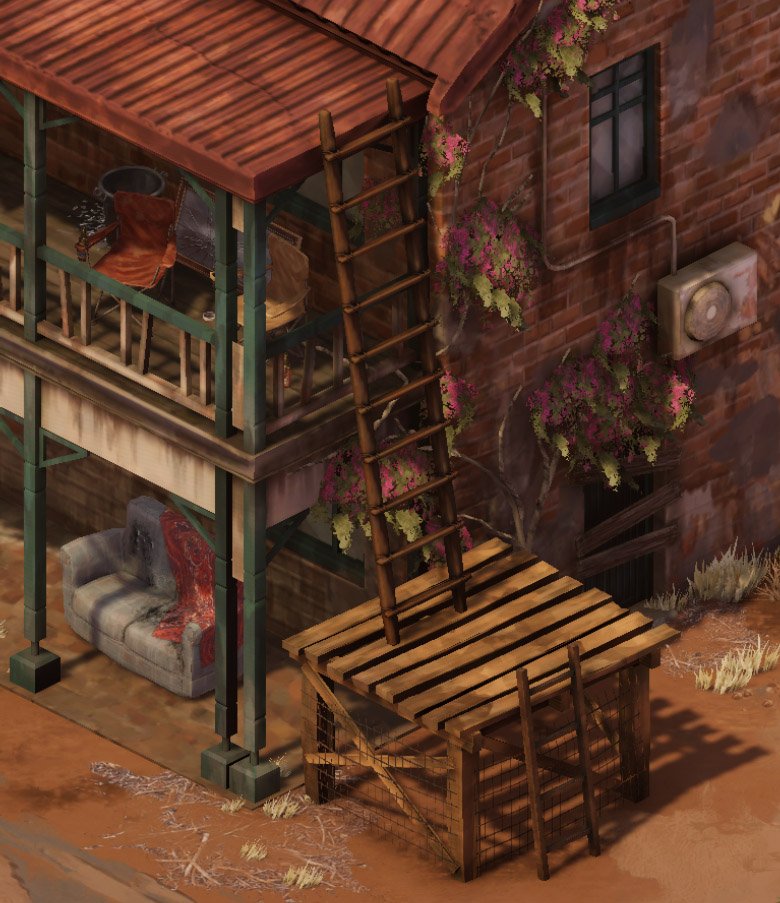
We have more square shapes and straight lines around here, so we avoid making more by having these ladders angled diagonally. It’s more interesting to look at and helps the ladders stand out a bit more. The camping chairs off to the side and the couch below also break up the shapes by adding curves and organic shapes to contrast against all of the hard edges in this screenshot.
CONTRAST
We can make certain props and objects stand out by contrasting them against other props or using certain coloured props. Let’s go back to those camping chairs from before:
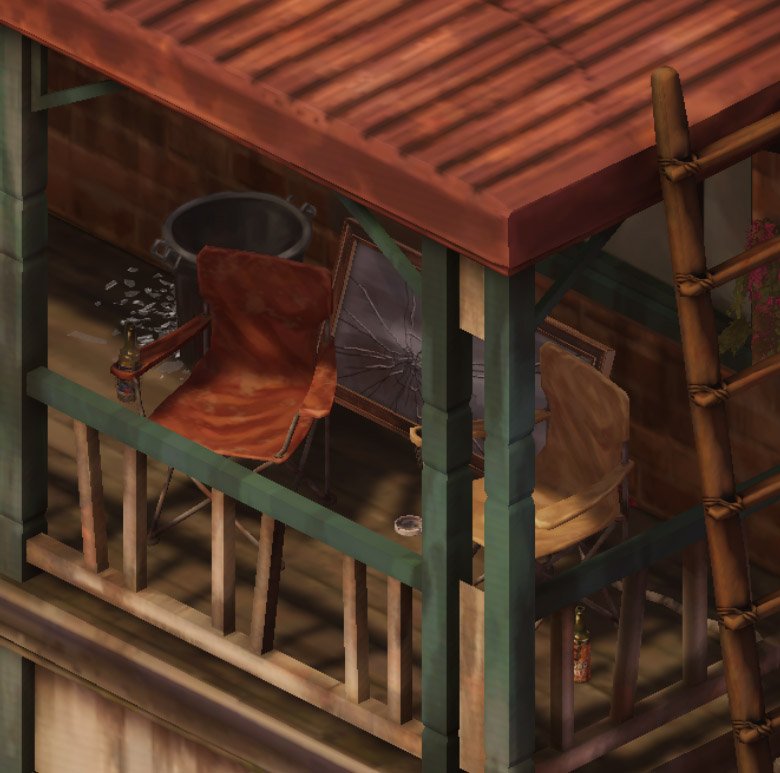
The bin and the mirror behind these chairs allow them to stand out against the orange bricks of the building. Without them, the chairs blend in a bit too much.
We can also use props of certain colours that inherently contrast against their backdrop. Here are some more camping chairs, this time in blue and green against a red roof.
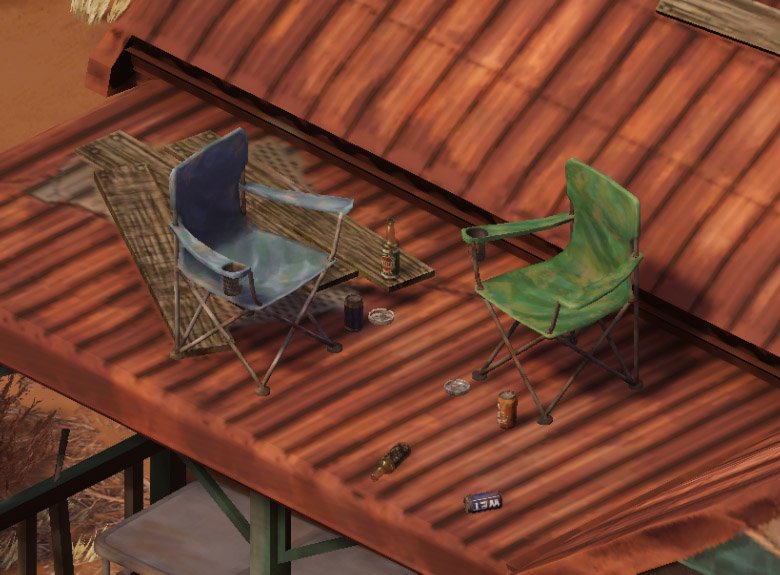
We could of course use green and blue camping chairs instead of having to put a mirror and a bin behind the red and tan ones, but variety is the spice of life, and it lets us have some fun with environmental storytelling. Speaking of which…
ENVIRONMENTAL STORYTELLING
Why is there a bin and a mirror there? Why are there chairs and beers on the roof? Was that a knife in the railing just before? These are all little details to give us some insight into how the people of Ardath like to live - carefree and dangerously. We previously saw ladders leading up to the roof, which is presumably how the chairs and beers got up there. Must be a nice view, but…
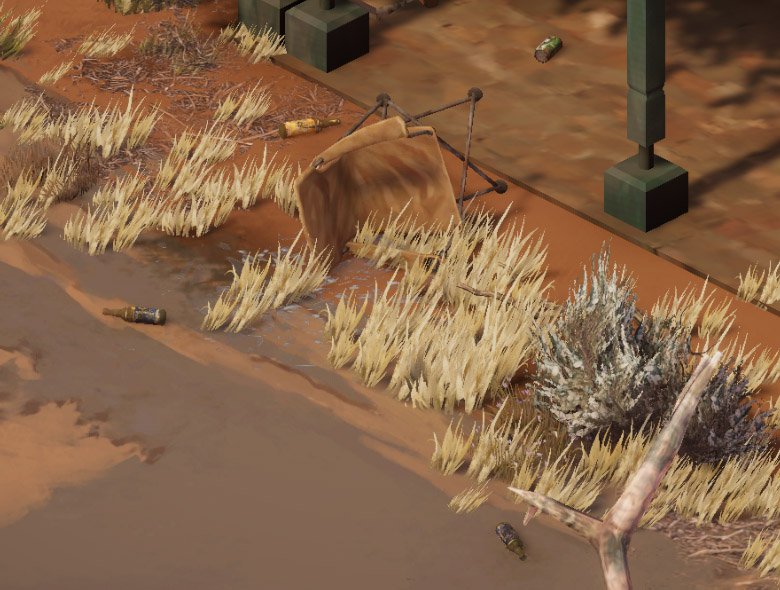
Accidents can happen. The empty beers might not be accidental though, they are an untidy bunch, judging by the smashed mirror and the dirty couch lying around.
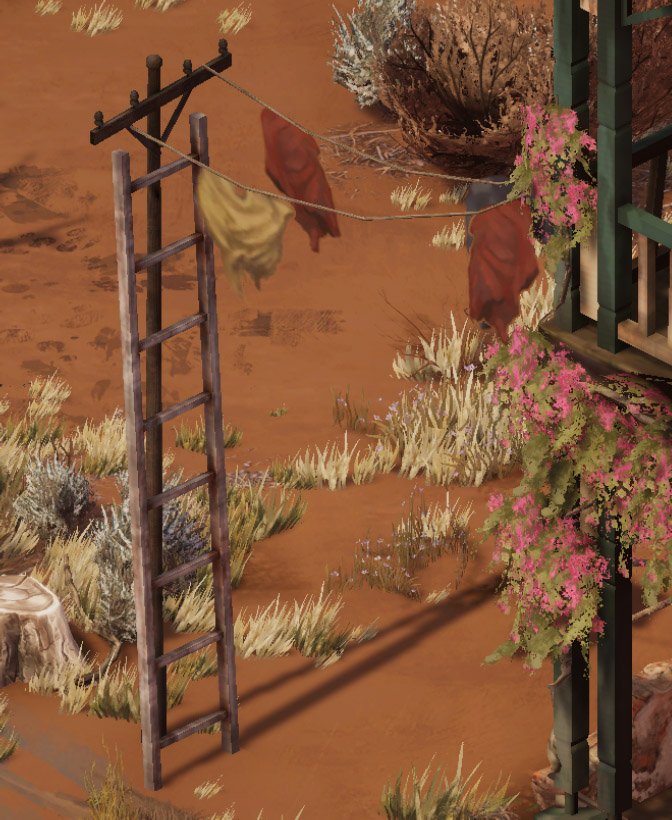
When they do try to be clean, however, they make it fun. Unless you’re not fun and think climbing up a telephone pole just to hang some washing is “a hazard” or whatever.
That about wraps up what I wanted to show off in this blog post! Creating levels is a collaborative effort. Sara Laubscher lead the environment design and texture work, Bianca Roux modelled the 3D props of the level and Ryan Gee handled the scene lighting and vegetation, without them none of the locations in Broken Roads would be what they are. I’ve learned a lot working with the art team of Drop Bear Bytes, and I’m excited to see what more we can do and how far we can push the visuals of our levels!
Thanks so much for reading, we will see you again soon!







